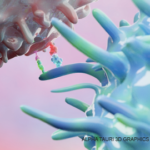The fibroblast is typically considered a structural cell that contributes to lung repair. This study suggests that the lung fibroblast has innate immune function and can release inflammatory mediates at a level on par with professional innate immune cells such as macrophages. IL-1α appears to play a pivotal role in triggering the proinflammatory response in fibroblasts.
“Our observations raise the possibility that the resident lung fibroblasts may provide the immediate inflammatory response to any epithelial barrier injury and attract and activate myeloid cells with killing capacity into the vicinity to protect against infection while the integrity of the barrier function is re-established,” wrote Dr. Fisher.
Dr. Pullen is a medical writer based in the Chicago area.
Reference
